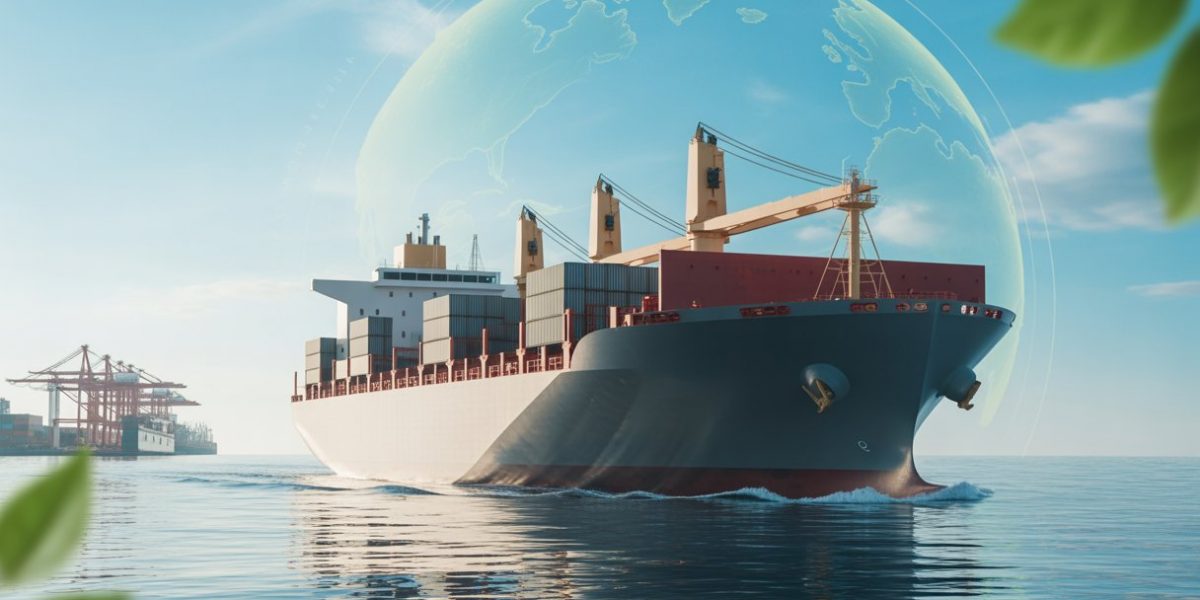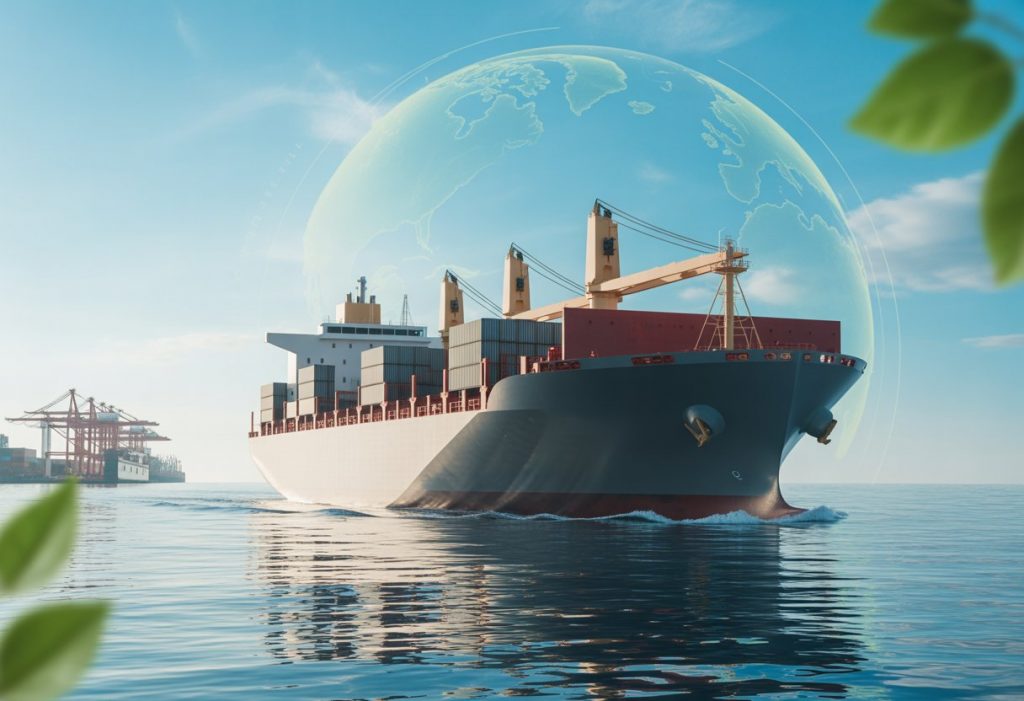The shipping industry stands at a critical turning point as businesses and consumers increasingly demand environmentally responsible delivery options. Traditional shipping methods contribute significantly to global carbon emissions, prompting a widespread shift towards more sustainable practices across the logistics sector.
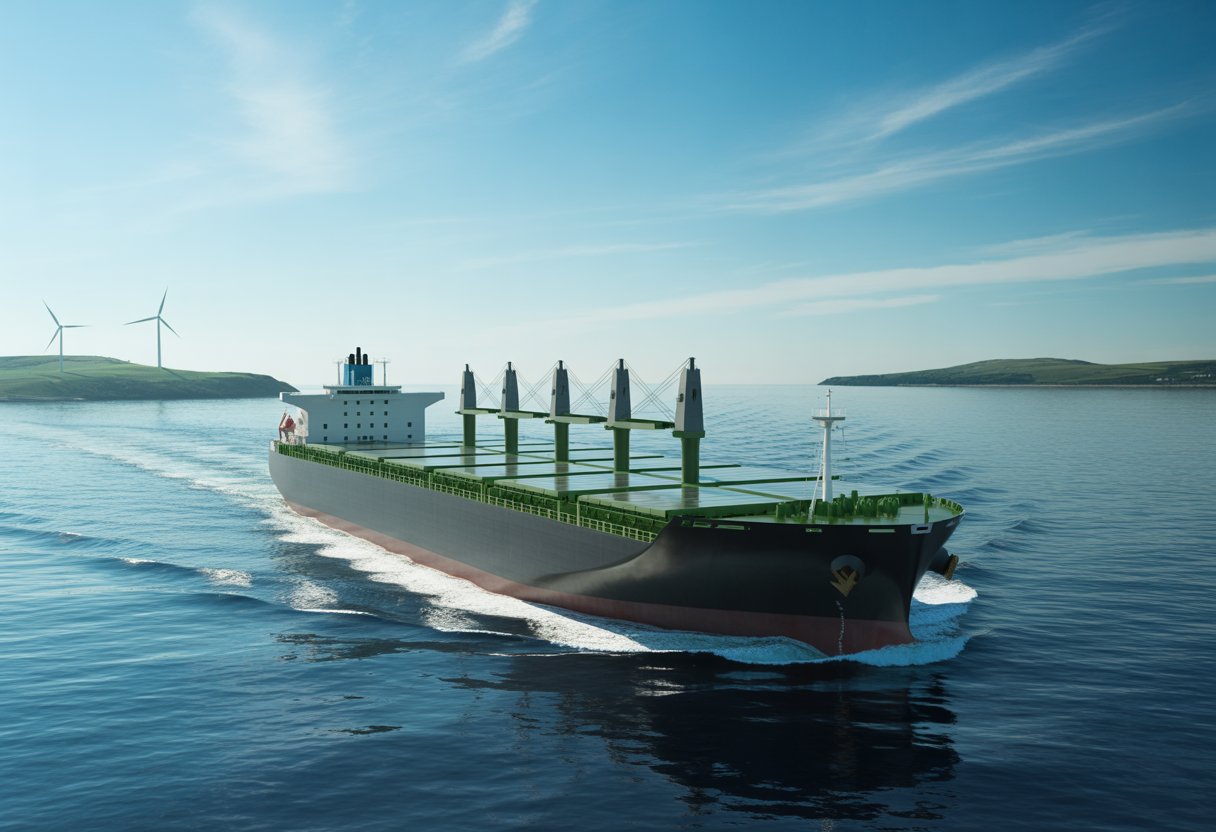
Companies that offer carbon-neutral shipping options are experiencing growing consumer preference, with recent surveys showing that 70% of consumers favour brands with sustainable practices. This surge in demand reflects heightened awareness of climate change impacts and the role that shipping plays in environmental degradation.
The transition to carbon-neutral shipping involves multiple approaches, from alternative fuels and advanced technologies to regulatory frameworks and implementation strategies. Understanding these various elements helps businesses navigate the complexities of sustainable logistics whilst meeting both consumer expectations and environmental targets.
Understanding Carbon-Neutral Shipping Options
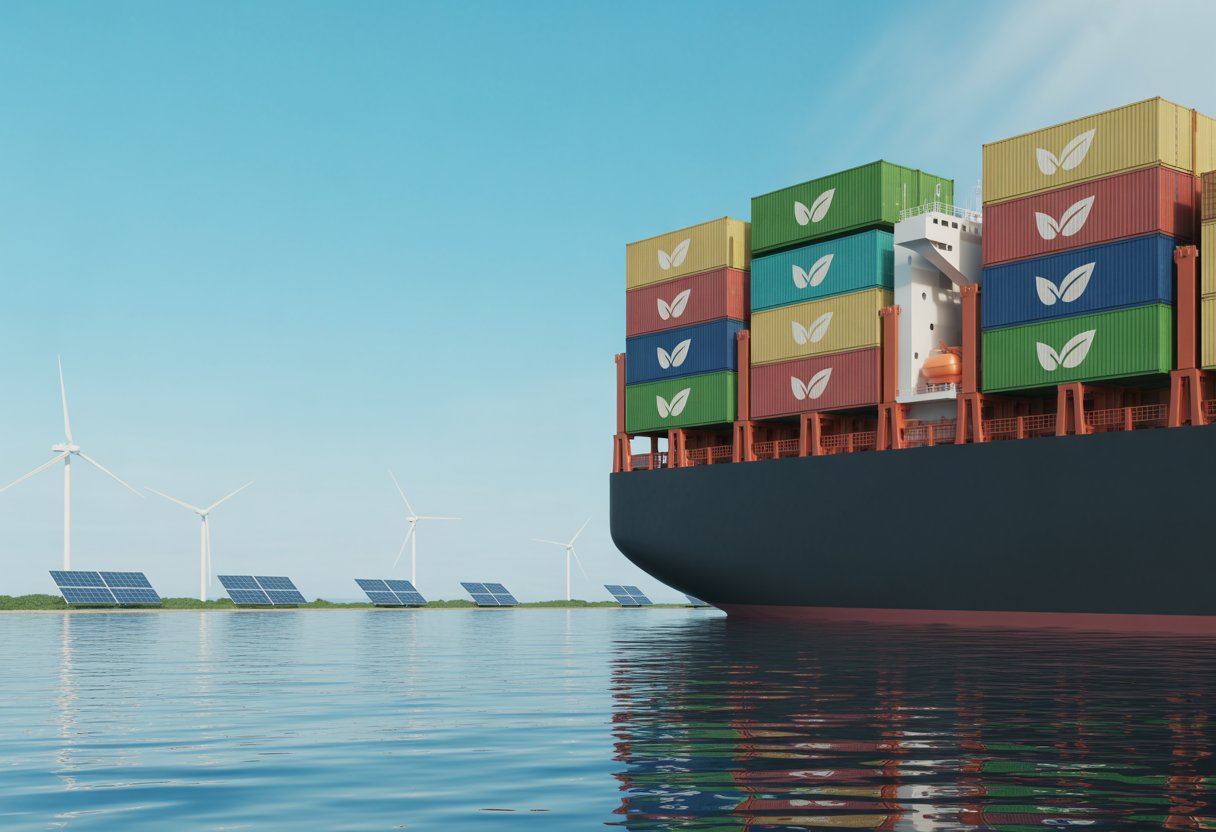
Carbon-neutral shipping balances the carbon dioxide emissions created during transportation by investing in projects that remove or prevent an equal amount of emissions elsewhere. This approach combines emission reduction strategies with offset programmes to achieve a net-zero carbon footprint.
Defining Carbon-Neutral Shipping
Carbon-neutral shipping occurs when companies transport goods whilst ensuring the total carbon emissions from their operations equal zero. This balance happens through two main approaches.
Companies first reduce their direct shipping emissions. They use cleaner fuels, optimise delivery routes, and improve vehicle efficiency. These changes lower the amount of carbon dioxide released during transportation.
The remaining emissions get offset through environmental projects. Companies invest in programmes that remove carbon from the atmosphere. Tree planting, renewable energy projects, and carbon capture technologies are common offset methods.
True carbon neutrality requires measuring all emissions accurately. This includes fuel use, warehouse operations, and packaging materials. Companies must track these numbers to know how much they need to offset.
Some businesses achieve carbon neutrality immediately through offsets. Others focus on reducing emissions first, then offsetting what remains. Both approaches can reach the same goal of net-zero shipping emissions.
Key Components of Carbon-Neutral Operations
Carbon-neutral shipping operations rely on several essential elements working together. Measurement and tracking form the foundation of any carbon-neutral programme.
Companies must calculate their shipping emissions precisely. This includes direct emissions from vehicles and indirect emissions from electricity use. Accurate measurement ensures offset programmes match actual carbon output.
Emission reduction strategies help minimise the carbon footprint before offsetting begins. Route optimisation reduces fuel consumption and delivery times. Consolidating shipments means fewer vehicles on the road.
Alternative fuels play a crucial role in sustainable practices. Electric vehicles, biofuels, and hydrogen power create fewer emissions than traditional diesel engines. Many shipping companies are transitioning their fleets to these cleaner options.
Offset investments address unavoidable emissions. Companies purchase carbon credits from verified environmental projects. These might include:
- Forest restoration programmes
- Renewable energy installations
- Methane capture projects
- Direct air capture technology
Transparency and verification ensure programmes deliver real results. Third-party organisations audit both emission calculations and offset projects. This verification builds trust with customers and regulators.
Types of Carbon-Neutral Shipping Methods
Several carbon-neutral shipping methods exist across different transportation modes. Last-mile delivery options focus on the final stage of shipping to customers.
Electric delivery vans eliminate local emissions in urban areas. Cargo bikes work well for small packages in city centres. Some companies use electric scooters for lightweight deliveries.
Maritime shipping faces unique challenges due to long distances and heavy cargo. Shipping companies are testing alternative fuels like ammonia and hydrogen. Wind-assisted propulsion systems help reduce fuel consumption.
Slow steaming involves ships travelling at reduced speeds. This practice cuts fuel use and emissions by up to 30%. Container optimisation ensures maximum cargo efficiency per voyage.
Aviation shipping relies heavily on offset programmes currently. Sustainable aviation fuels offer some emission reductions. Airlines invest in forest protection and renewable energy projects to offset remaining emissions.
Ground transportation provides the most carbon-neutral options today. Rail transport produces fewer emissions per tonne than road transport. Electric trucks are becoming viable for medium-distance deliveries.
Intermodal shipping combines multiple transport methods efficiently. Companies use rail for long distances and electric vehicles for final delivery. This approach minimises emissions across the entire shipping journey.
Drivers of Demand for Carbon-Neutral Shipping
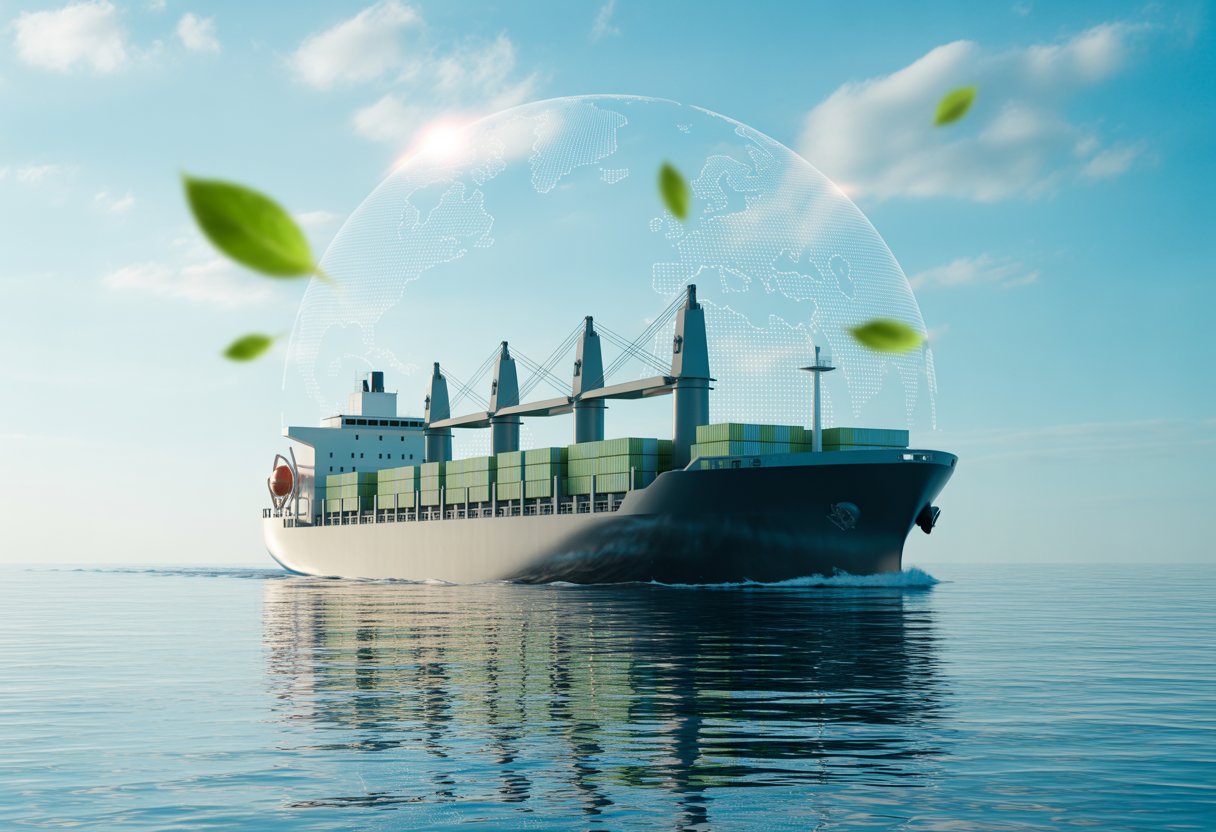
Three main forces are pushing shipping companies towards carbon-neutral options. Consumer preferences for sustainable products are changing how people shop, whilst companies face growing pressure to reduce their environmental impact across entire supply chains.
Eco-Conscious Consumers and Market Trends
Modern consumers increasingly consider environmental impact when making purchasing decisions. Studies show that 67% of shoppers are willing to pay more for products from environmentally responsible brands.
This shift affects how people view shipping choices. Online retailers report that customers often ask about delivery methods and their carbon footprint. Many shoppers now prefer slower, greener shipping options over fast delivery that creates higher emissions.
Brand loyalty has become closely tied to sustainability practices. Companies using carbon-neutral shipping often see stronger customer retention rates. Younger consumers, particularly those aged 18-35, show the strongest preference for sustainable shipping options.
Social media has amplified awareness of shipping’s environmental impact. Viral content about ocean pollution and greenhouse gas emissions has made consumers more conscious of their choices. This creates market pressure for greener alternatives.
E-commerce growth has made shipping more visible to consumers. People now see shipping as part of a brand’s environmental commitment, not just a logistics function.
Corporate Sustainability Initiatives
Major corporations are driving demand through comprehensive sustainability programmes. Nine global companies including Amazon, IKEA, and Unilever pledged in 2021 to use only zero-carbon fuel ships by 2040.
Companies face pressure from investors who prioritise environmental, social, and governance (ESG) criteria. Many investment funds now require detailed carbon footprint reporting, including shipping emissions.
Supply chain sustainability has become a competitive advantage. Brands highlight their use of carbon-neutral shipping in marketing materials and sustainability reports. This creates a ripple effect throughout the industry.
Corporate carbon reduction targets often include Scope 3 emissions, which cover shipping and logistics. Companies must reduce these indirect emissions to meet climate goals. This requirement pushes businesses to seek carbon-neutral shipping partners.
International agreements and frameworks guide corporate action. The Science Based Targets initiative helps companies set emissions reduction goals that include shipping activities.
Regulatory Pressures and Policy Developments
The International Maritime Organisation (IMO) has set ambitious targets for the shipping industry. New regulations require significant reductions in carbon emissions from maritime transport by 2030.
Regional policies are accelerating change. The European Union’s Emissions Trading System now includes shipping, making carbon emissions costly for operators. Similar programmes are developing in other regions.
National governments offer incentives for clean shipping technologies. These include tax breaks for companies using alternative fuels and grants for port infrastructure improvements.
Port authorities are implementing environmental standards. Many major ports now charge fees based on ships’ environmental performance, creating financial incentives for cleaner operations.
International climate commitments under the Paris Agreement influence shipping regulations. Countries must include maritime emissions in their national reduction plans, leading to stricter domestic policies.
The Poseidon Principles align ship financing with climate goals. Major financial institutions use these guidelines when funding shipping projects, favouring carbon-neutral technologies.
Regulations and Industry Frameworks Shaping Sustainable Shipping
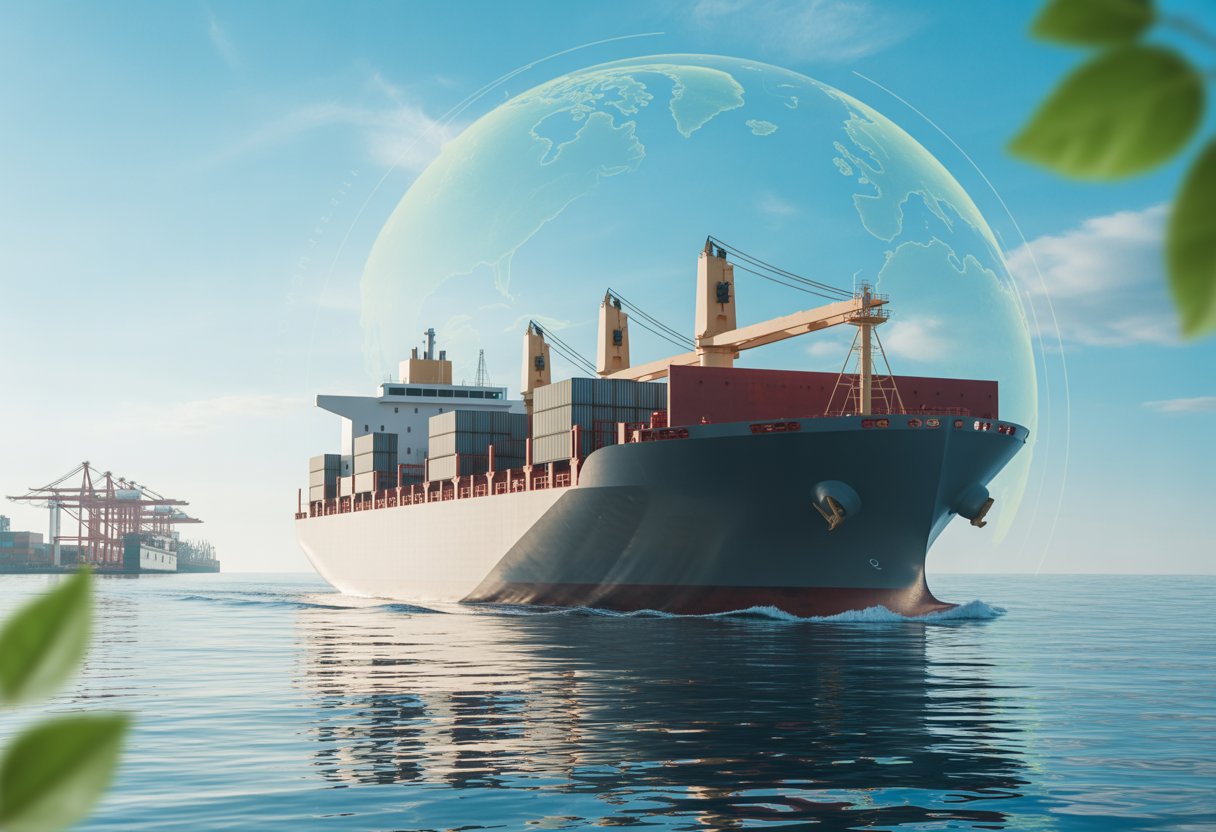
Global maritime regulations now require significant emissions cuts from the shipping industry. Financial institutions and international bodies are creating frameworks that tie funding to environmental performance whilst setting clear decarbonisation targets.
International Maritime Organisation (IMO) Strategies
The International Maritime Organisation approved new regulations in April 2025 to achieve net-zero emissions in global shipping. These rules establish mandatory marine fuel standards and greenhouse gas emissions pricing across the entire sector.
The IMO Net-zero Framework combines mandatory emissions limits with GHG pricing mechanisms. This dual approach accelerates the shift to cleaner shipping technologies whilst raising funds to support countries during the transition.
Key regulatory measures include:
- Maximum limits on greenhouse gas content in marine fuels
- Mandatory emissions reporting requirements
- Carbon pricing systems for international shipping
- Technology-neutral approaches encouraging innovation
The FuelEU Maritime Regulation sets specific limits on greenhouse gas content for ships calling at European ports. It encourages zero-emission technology use when ships dock in ports.
These regulations force companies to assess and reduce their carbon footprint. They also create investment opportunities in sustainable practices and clean technologies.
The Poseidon Principles and Financial Mechanisms
The Poseidon Principles represent a landmark framework for maritime finance institutions. Banks and lenders use these principles to align their shipping portfolios with climate goals.
Financial institutions assess borrowers based on their vessels’ carbon intensity performance. Ships that exceed emissions targets face higher borrowing costs or restricted access to capital.
Key features include:
- Annual emissions intensity measurements
- Portfolio alignment reporting
- Transparent disclosure requirements
- Climate risk assessments
This creates market pressure for shipping companies to invest in cleaner technologies. Banks can demonstrate their commitment to climate action through measurable shipping portfolio improvements.
The principles now influence billions of dollars in maritime lending decisions. This financial leverage accelerates the industry’s transition to sustainable operations.
Alignment with Global Emission Targets
International shipping regulations align with the Paris Agreement’s temperature goals. The industry must reduce emissions by at least 50% by 2050 compared to 2008 levels.
Recent regulatory frameworks target more ambitious reductions. Many jurisdictions now require net-zero emissions by 2050 rather than just significant cuts.
Regional regulations complement global standards:
| Region | Key Regulation | Target |
|---|---|---|
| European Union | FuelEU Maritime | 80% emissions reduction by 2050 |
| Global | IMO Framework | Net-zero by 2050 |
| Various | Carbon Border Adjustments | Immediate compliance requirements |
The European Union’s Emissions Trading System now includes international shipping. This creates immediate financial incentives for emissions reductions.
These regulations require companies to develop clear sustainability strategies. The frameworks provide practical guidance for meeting present and future environmental challenges whilst maintaining commercial viability.
Technological Innovations and Alternative Fuels
Shipping companies are developing new technologies to cut carbon emissions from their fleets. These advances include wind-powered systems, clean burning fuels made from plants and waste, and ships powered by electricity or hydrogen fuel cells.
Zero-Emission Shipping Technologies
Wind-assisted propulsion systems are making a comeback in modern shipping. These systems use special sails and rotors to capture wind energy. They can reduce fuel use by 10-20% on some routes.
Advanced battery systems power smaller vessels for short trips. Electric cargo ships work well for coastal routes and river transport. The technology limits these ships to shorter distances because of battery weight and charging time.
Some companies combine multiple technologies on one ship. They use wind power with electric motors and backup diesel engines. This approach gives ships more options for different weather and route conditions.
Smart ship systems use artificial intelligence to find the most efficient routes. These systems consider weather, currents, and fuel costs. They help reduce emissions by making every trip more efficient.
Biofuels and Green Methanol
Biofuels come from plant oils, waste cooking oil, and algae. Ships can use these fuels in existing engines with small changes. This makes biofuels an easy first step for many shipping companies.
Green methanol offers another clean fuel choice. Companies make it from renewable energy and captured carbon dioxide. Some major shipping lines have already ordered ships that run on methanol.
Key biofuel types for shipping:
- Waste cooking oil biodiesel
- Algae-based fuels
- Plant oil blends
- Synthetic fuels from renewable energy
The main challenge is making enough clean fuel for all ships. Fuel makers need promises from shipping companies to buy their products. Without these agreements, they cannot build enough production facilities.
Electric and Hydrogen-Powered Vessels
Electric ships work best for short routes with regular schedules. Ferry companies and coastal cargo ships use battery power for daily trips. These vessels charge at ports during loading and unloading.
Hydrogen fuel cells create electricity without emissions. The only waste product is water vapour. Ships can refuel with hydrogen gas or liquid hydrogen at special terminals.
Advantages of electric vessels:
- No direct emissions
- Quiet operation
- Lower maintenance costs
- Good for regular short routes
Hydrogen-powered vehicles face storage challenges at sea. Hydrogen takes up more space than diesel fuel. Ships need special tanks that keep hydrogen very cold or under high pressure.
Both technologies need new infrastructure at ports. Electric ships require charging stations with clean electricity. Hydrogen ships need fuel terminals and safety equipment for handling the gas.
Implementation Strategies for Carbon-Neutral Logistics
Companies can reduce their carbon footprint through three main approaches: optimising delivery routes for maximum efficiency, investing in certified carbon offset programmes, and switching to sustainable packaging materials.
Route Optimisation and Efficient Operations
Route optimisation forms the foundation of sustainable logistics by reducing fuel consumption and emissions. Advanced software systems analyse traffic patterns, delivery locations, and vehicle capacity to create the most efficient routes.
Companies use AI-powered logistics platforms to consolidate deliveries and reduce the number of vehicles on the road. This approach can cut fuel usage by 15-25% whilst maintaining delivery schedules.
Key optimisation techniques include:
- Grouping deliveries by geographical area
- Using real-time traffic data to avoid congestion
- Matching vehicle size to delivery requirements
- Scheduling deliveries during off-peak hours
Fleet electrification represents another crucial element. Electric vehicles produce zero direct emissions and become more cost-effective as battery technology improves.
Many logistics providers now combine route optimisation with consolidated deliveries, where multiple orders are grouped together for the same delivery area.
Carbon Offset Programmes
Carbon offsets allow logistics companies to neutralise emissions that cannot be eliminated through operational changes alone. These programmes invest in projects that remove or prevent carbon dioxide from entering the atmosphere.
Major shipping companies offer carbon-neutral delivery options where customers can offset their shipment emissions. DHL provides this service through certified environmental projects including reforestation and renewable energy initiatives.
Common offset project types include:
- Forest restoration and tree planting
- Renewable energy development
- Methane capture from landfills
- Clean cookstove programmes in developing countries
Companies must choose verified offset programmes that meet international standards. The most reliable certifications include Gold Standard and Verified Carbon Standard (VCS).
Offset programmes work best when combined with emission reduction strategies rather than used as the sole solution for carbon neutrality.
Adoption of Eco-Friendly Packaging
Sustainable packaging reduces environmental impact whilst maintaining product protection during transport. Companies are shifting from single-use materials to recyclable and biodegradable alternatives.
Reusable packaging systems offer significant environmental benefits for regular shipping routes. These containers can be collected, cleaned, and used multiple times before recycling.
Popular eco-friendly packaging options:
- Recycled cardboard and paper materials
- Biodegradable bubble wrap made from corn starch
- Mushroom-based packaging foam
- Reusable plastic containers for B2B shipments
Right-sizing packaging reduces material waste and shipping costs. Automated packaging systems can create custom-sized boxes that use 40% less material than standard boxes.
Many customers now prefer companies that use sustainable packaging. Studies show that 60% of online shoppers are willing to wait longer for green shipping options that reduce environmental impact.
Benefits and Challenges of Carbon-Neutral Shipping
Carbon-neutral shipping offers significant environmental advantages and brand benefits whilst presenting substantial operational and financial obstacles. Success requires extensive collaboration across the shipping industry to overcome regulatory and technological barriers.
Environmental Impact and Brand Differentiation
Carbon-neutral shipping directly addresses the shipping industry’s responsibility for nearly 3% of global greenhouse gas emissions. Companies adopting these practices demonstrate measurable environmental commitment by offsetting transportation-related carbon outputs through verified projects.
This environmental focus creates clear brand differentiation in competitive markets. Businesses offering carbon-neutral options attract environmentally conscious consumers who increasingly prioritise sustainable purchasing decisions.
Key brand advantages include:
- Enhanced corporate reputation
- Improved customer loyalty
- Meeting sustainability targets
- Competitive market positioning
The environmental benefits extend beyond carbon reduction. Companies implementing carbon-neutral practices often adopt broader sustainability measures including improved fuel efficiency and reduced packaging waste.
Brand differentiation becomes particularly valuable as consumers demand transparency about environmental impact. Companies can showcase concrete emission reduction efforts rather than vague environmental claims.
Operational and Financial Barriers
High upfront costs represent the primary challenge for carbon-neutral shipping implementation. Alternative fuels, advanced technologies, and carbon offset programmes require significant initial investment without guaranteed immediate returns.
Limited access to green fuels creates operational constraints. Many shipping companies struggle to secure reliable supplies of sustainable aviation fuel or other low-carbon alternatives at scale.
Major operational challenges include:
- Infrastructure limitations
- Technology availability
- Fuel supply chain gaps
- Staff training requirements
Inconsistent global regulations complicate compliance efforts. Companies operating internationally must navigate varying environmental standards and reporting requirements across different jurisdictions.
Financial barriers particularly affect smaller shipping companies. Whilst larger corporations can absorb transition costs, smaller operators may lack resources for comprehensive carbon-neutral programmes.
Collaboration and Industry Partnerships
Global cooperation proves essential for widespread carbon-neutral shipping adoption. Individual companies cannot address systemic challenges like fuel infrastructure and regulatory standardisation independently.
Industry partnerships enable shared investment in green technologies and infrastructure development. Collaborative approaches reduce individual financial burdens whilst accelerating technological advancement across the shipping industry.
Successful collaboration areas include:
- Fuel supply chain development
- Technology research initiatives
- Regulatory advocacy efforts
- Best practice sharing
Port authorities, fuel suppliers, and shipping companies must coordinate infrastructure investments. This collaboration ensures adequate green fuel availability and charging stations for electric vessels.
International organisations play crucial roles in establishing consistent standards. The International Maritime Organisation’s ambitious targets require coordinated industry response rather than fragmented individual efforts.
Partnerships between established shipping companies and technology startups accelerate innovation. These relationships combine operational expertise with cutting-edge sustainable technologies.

